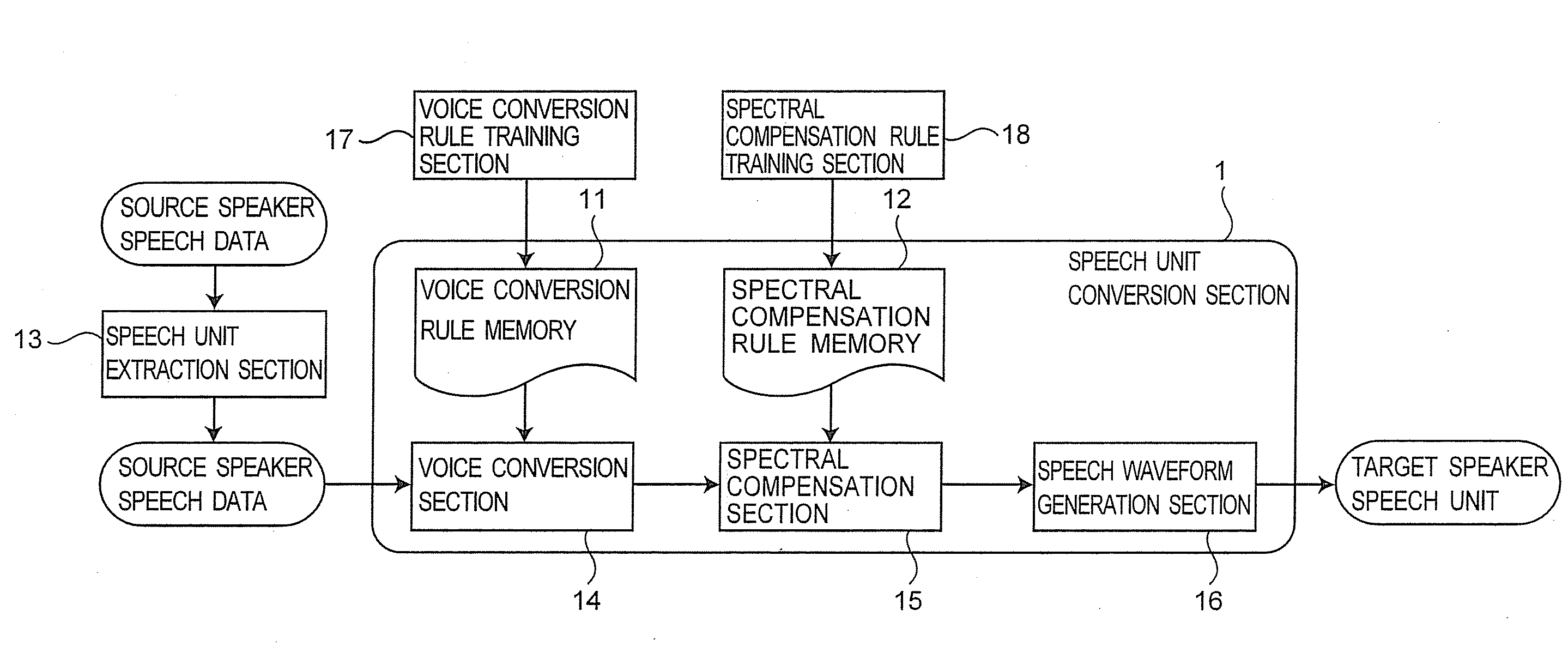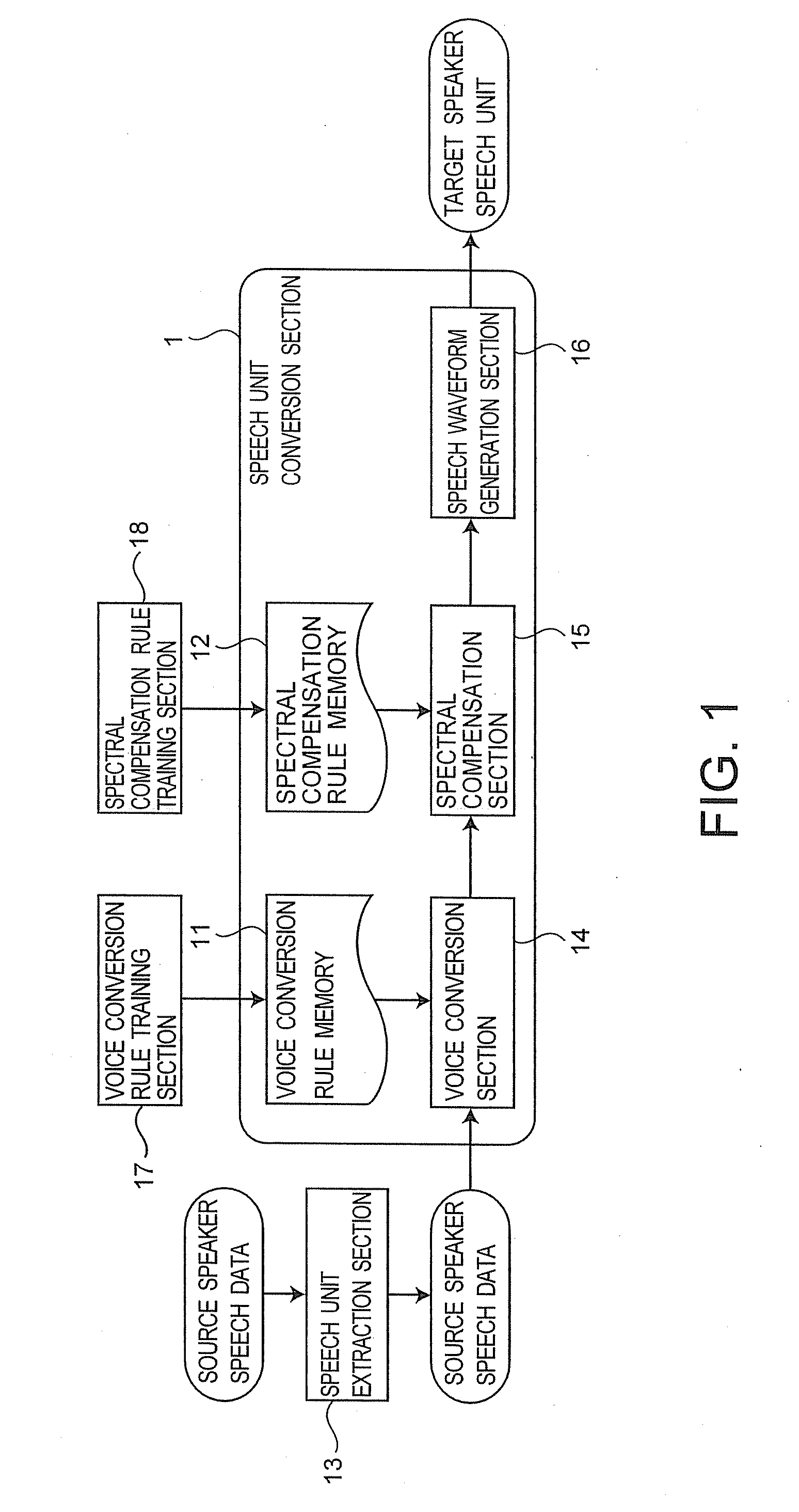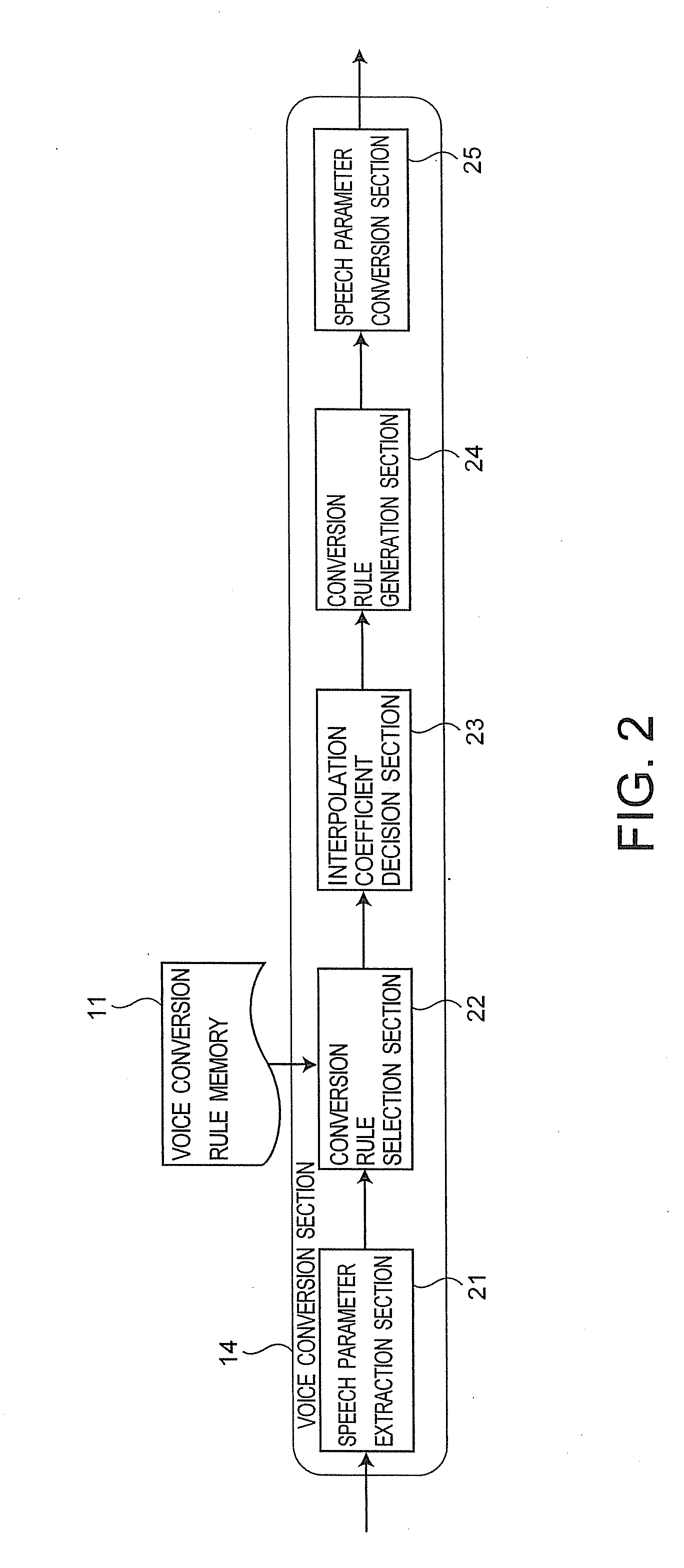Voice conversion apparatus and speech synthesis apparatus
a voice conversion and voice technology, applied in the field of voice conversion apparatus and speech synthesis apparatus, can solve the problems of not always straight speech temporal change, not always smooth parallel spectral parameters, and often falling quality of converted voice, so as to reduce the fall of similarity (caused by interpolation model assumed) to the target speaker
- Summary
- Abstract
- Description
- Claims
- Application Information
AI Technical Summary
Benefits of technology
Problems solved by technology
Method used
Image
Examples
first embodiment
[0046]A voice conversion apparatus of the first embodiment is explained by referring to FIGS. 1-22.
(1) Component of the Voice Conversion Apparatus
[0047]FIG. 1 is a block diagram of the voice conversion apparatus according to the first embodiment. In the first embodiment, a speech unit conversion section 1 converts speech units from a source speaker's voice to a target speaker's voice.
[0048]As shown in FIG. 1, the speech unit conversion section 1 includes a voice conversion rule memory 11, a spectral compensation rule memory 12, a voice conversion section 14, a spectral compensation section 15, and a speech waveform generation section 16.
[0049]A speech unit extraction section 13 extracts speech units of a source speaker from source speaker speech data. The voice conversion rule memory 11 stores a rule to convert a speech parameter of a source speaker (source speaker spectral parameter) to a speech parameter of a target speaker (target speaker spectral parameter). This rule is created...
modification examples
(8) Modification Examples
[0152]In the first embodiment, an interpolation model with probability is assumed. However, in order to simplify, linear interpolation may be used. In this case, as shown in FIG. 21, the voice conversion rule memory 11 stores a regression matrix of K units and a typical spectral parameter corresponding to each regression matrix. The voice conversion section 14 selects the regression matrix using the typical spectral parameter.
[0153]As shown in FIG. 22, as to a spectral parameter xt (1=k corresponding to ck having the minimum distance from a start point x1 is selected as a regression matrix Ws of the start point x1. In the same way, a regression matrix wk corresponding to ck having the minimum distance from an end point xT is selected as a regression matrix We of the end point xT.
[0154]Next, the interpolation coefficient decision section 23 determines an interpolation coefficient based on linear interpolation. In this case, an interpolation coefficient ωs(t) ...
second embodiment
The Second Embodiment
[0160]A text speech synthesis apparatus according to the second embodiment is explained by referring to FIGS. 23-28. This text speech synthesis apparatus is a speech synthesis apparatus having the voice conversion apparatus of the first embodiment. As to an arbitrary input sentence, a synthesis speech having a target speaker's voice is generated.
(1) Component of the Text Speech Synthesis Apparatus
[0161]FIG. 23 is a block diagram of the text speech synthesis apparatus according to the second embodiment. The text speech synthesis apparatus includes a text input section 231, a language processing section 232, a prosody processing section 233, a speech synthesis section 234, and a speech waveform output section 235.
[0162]The language processing section 232 executes morphological analysis and syntactic analysis to an input text from the text input section 231, and outputs the analysis result to the prosody processing section 233. The prosody processing section 233 pr...
PUM
 Login to View More
Login to View More Abstract
Description
Claims
Application Information
 Login to View More
Login to View More - R&D
- Intellectual Property
- Life Sciences
- Materials
- Tech Scout
- Unparalleled Data Quality
- Higher Quality Content
- 60% Fewer Hallucinations
Browse by: Latest US Patents, China's latest patents, Technical Efficacy Thesaurus, Application Domain, Technology Topic, Popular Technical Reports.
© 2025 PatSnap. All rights reserved.Legal|Privacy policy|Modern Slavery Act Transparency Statement|Sitemap|About US| Contact US: help@patsnap.com



